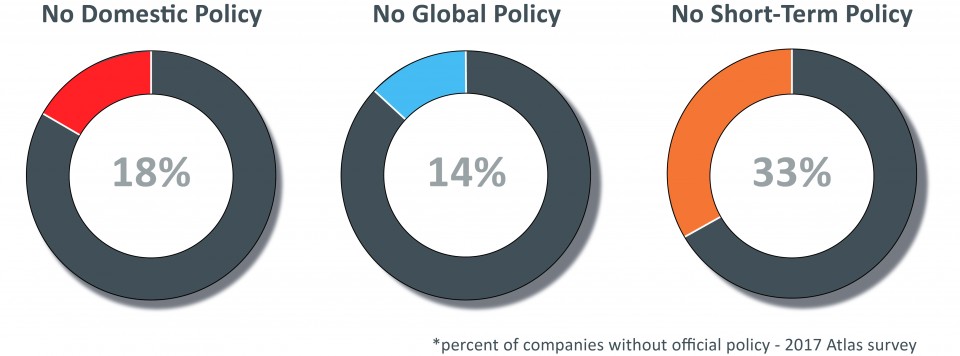|
|
The Emmy nominated series MythBusters aims to uncover the truth behind popular myths and legends by mixing science, curiosity and ingenuity to create an experiment. As much as I would love to do an experiment to find out if Diet Coke and Mentos will make your stomach explode or if it is possible to beat a lie detector test, I am actually going to bust some common relocation myths heard in the relocation industry. As a professional relocation policy consultant, I have witnessed how some myths encourage mistakes when creating corporate relocation policies. These myths sometimes negatively impact a host of policy elements, including household goods move, transferee support services, language training limits, and even reimbursement considerations, which commonly stem from generalizations. Let’s uncover the truth behind some of these commonly held generalizations.
[divider line_type=”No Line” custom_height=”40″]
Myth 1: Every company needs a relocation policy.
If you infrequently transfer employees and your transfers are mainly US Domestic an “offer letter” is as effective as a standard policy. When writing the “offer letter”, it’s important to clearly define the benefits offered. However, if you transfer more than a handful of employees annually then a well defined tiered relocation policy is recommended.[divider line_type=”No Line” custom_height=”1″]

[divider line_type=”No Line” custom_height=”25″]
Myth 2: Lump sum programs save the company money.
[clickToTweet tweet=”When given a lump sum employees often cut corners with their relocation and pocket additional funds” quote=”When given a lump sum employees often cut corners with their relocation, pocketing additional funds” theme=”style3″]
Although a lump sum is a perfect solution for the college graduate new hire, it is rarely recommended for a more professional level of employee. The fact is, by cutting a lump sum check the employee often cuts corners with their relocation and then pockets the additional money. There are also tax disadvantages with the lump sum. If the company is not grossing up the lump sum, there are FICA taxes required to be paid by the company. If the company is not offering tax assistance, the amount of taxes that are withheld are significant and the employee is then paying tax on a benefit that is non taxable if the funds are used for the household goods move. There are also liability concerns with the employee choosing to rent a UHAUL and moving themselves. Bottom line is that the employee ends up being more stressed and unable to focus on the job since they are coordinating all aspects of their move.
[divider line_type=”No Line” custom_height=”40″]
Myth 3: Unpacking is a dream come true.
Reality is, unpacking can be a nightmare. Unpacking in the moving industry consists of the crew removing everything out of the boxes and placing it on the closest flat surface. It will be placed in the correct room, but will not be put away in cabinets or closets. Many people prefer to unpack at their leisure, prioritizing the most critical items first, and have it out of sight until they have time to get to it.
A recommended solution is to replace unpacking with debris pick-up which involves having the mover come pick up the boxes and materials when the unpacking is complete. An additional advantage is that it saves the company between $300 and $1,000 per move.
[divider line_type=”No Line” custom_height=”20″]
Myth 4: Millennials only want self service options.
[clickToTweet tweet=”While millennials love online resources, we find they lean heavily on relocation coaches.” quote=”While millennials love their online resources, we find they lean heavily on relocation coaches.” theme=”style3″]
I’ve heard time and again that millennials are all about self service, and would rather manage their own relocation via digital resources rather than speaking with a live relocation consultant. While millennials do tend to use more online resources than previous generations, we find this statement to be extremely false. In fact, most Millennials often need even more hand holding than the standard executive transferee since it may be their first time moving, first time buying or selling a home and may be inexperienced with relocation in general. Due to the newness of it all, they may have personal questions about how to navigate through breaking a lease or what neighborhood would best suit their lifestyle, etc.
Millennials will still rely on social networking websites like Facebook and LinkedIn to make virtual friends or connections at their new location even prior to moving there.[divider line_type=”No Line” custom_height=”20″]
Myths 5-12:
We put the industry’s most common assumptions to the test in our latest white paper for 2016.
Nancy Kritzer | CRP
Senior Vice President, Domestic Services Nancy has over 35 years of experience in the real estate and relocation arena. Her real estate, relocation, and management experience is exceptional. She is responsible for the leadership, training and mentoring of new and existing coaches, ensuring the team is delivering the highest levels of customer service possible. Nancy holds the Certified Relocation Professional (CRP) designation.
 Sam Hoey
Sam Hoey



